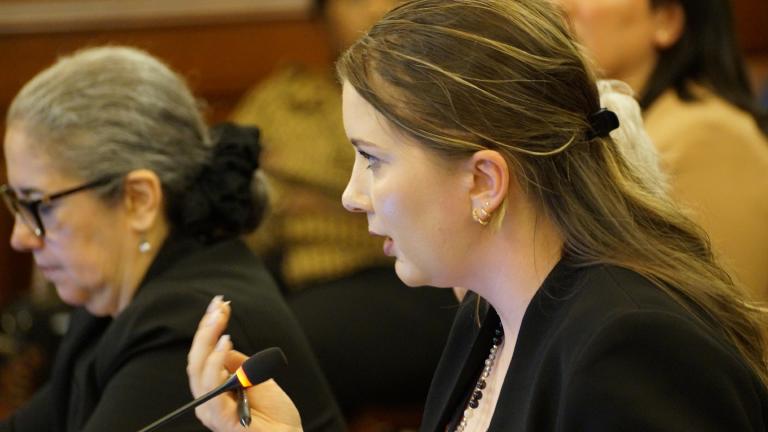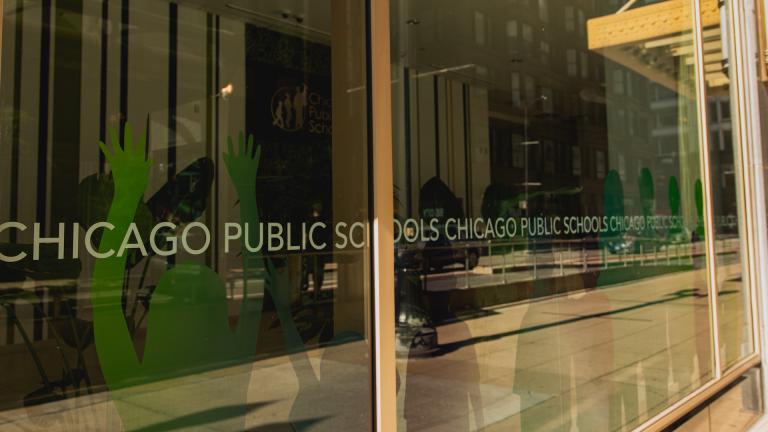Chicago Public Schools students are now back in the classroom — virtually, that is.
After being out of their school buildings for the last four weeks due to the coronavirus, students officially began remote learning Monday.
The district says it’s offering both digital and non-digital instruction and working to distribute 100,000 Chromebook and iPads to schools where students need them the most.
Despite efforts by the district and parents, many argue nothing can replace time in the classroom.
Andrea Zayas is the mother of four busy children, ages 10, 9, 7 and 4.
“It has been a very sudden and drastic shift in our day-to-day,” she said of the school closures and stay-at-home order. “We’re used to being on the go.”
She set up a corner of her bedroom with educational posters and a computer for her kids to use for some of their home schooling.
But Zayas is also a teacher, and she’s trying to provide remote learning for her 25 students who typically attend Erie Charter School in Humboldt Park.
And as most working parents will tell you, the juggle is real.
“The 7-year-old, at 11 o’clock, I’m able to let him use my work computer and he sits right here and does his Zoom call with his teacher,” Zayas said. “At 12, it becomes really tricky, because I have to teach and the two oldest both have their Zoom calls.”
“Then, I still have to cook lunch and still make staff meetings, and team-teaching meetings and collaboration meetings, just trying to figure this all out as teacher as well, because we’re not used to this platform,” she said. “We’re used to being in front of our kids! We’re used to whiteboards and erasers and hands-on.”
Zayas recognizes that as an educator who can afford an extra device for her family’s educational needs, she has a bit of an advantage over some parents.
Census Bureau data shows that one in four Chicago homes with kids under 18 do not have broadband internet access.
The gap is wider in predominantly black communities, like Austin and West Englewood, where one-third to one-half of homes do not have an internet connection.
“We did a survey of our members and only 4% of our members are reporting all of their students—or virtually all of their students—have access to internet devices at home. A third are reporting that few, if any, have access to internet at home,” said Chicago Teachers Union President Jesse Sharkey.
“It’s not just since this social crisis has come along. What it is doing is revealing that there already was a social crisis,” he said.
CPS says that this week alone, 400 schools are distributing more than 60,000 devices to students.
Under the remote learning guidance from the state board of education, districts are encouraged to switch to “pass” or “incomplete” grading options, versus an A through F scale.
And the expectations are different: CPS’s remote learning guidance for parents recommends 60 minutes of daily instruction for preschool students and up to 4.5 hours for high school students.
Even then, remote learning will look vastly different from household to household.
“There’s going to be a range of experiences that kids are having. I don’t think anybody thinks even in the best possible circumstances kids aren’t going to be behind where we academically want them to be,” said Advance Illinois Executive Director Robin Steans. “We’re going to need a lot of time to catch kids up.”
Research from NWEA, a nonprofit that creates assessment tests for school districts, estimates that students will return to the fall classroom with only 70% of the reading gains they would’ve made in a typical year, and only 50% of the gains in math.
And when students do return, teachers will have to meet them where they are. Until then, parents and teachers like Zayas worry whether whatever they’re providing now is enough.
“I worry about parents who are overwhelmed with these responsibilities. Being a full-time parent who works a job, who’s working from home, and also home schooling: these are full-time jobs that were never meant to happen simultaneously,” Zayas said. “As a parent, I become very overwhelmed and stressed. So I really count on my teachers who’re teaching my children to fill in those gaps, and encourage them and motivate them and help them. So I’m worried that I’m not able to do that for my students.”
Meanwhile, the federal stimulus bill, or CARES Act, is estimated to send more than $569 million to the Illinois State Board of Education for coronavirus-related needs. Of that, CPS schools are estimated to receive more than $205 million.
Follow Brandis Friedman on Twitter @BrandisFriedman







